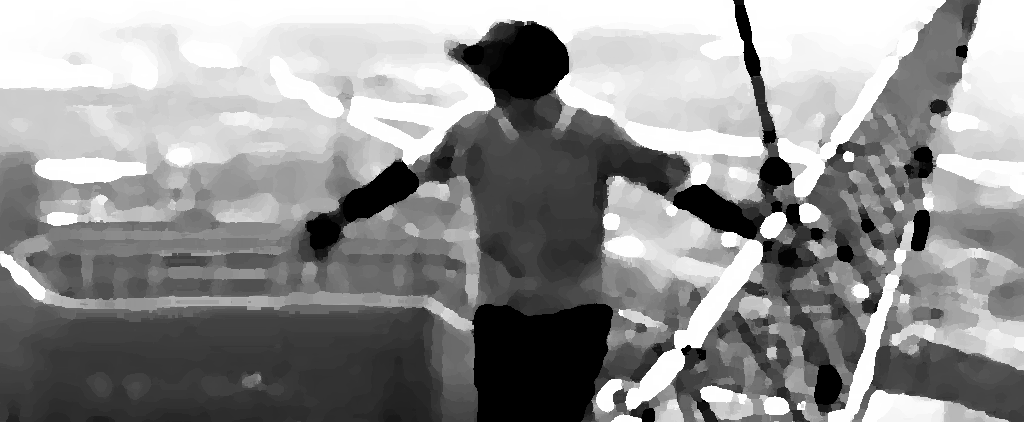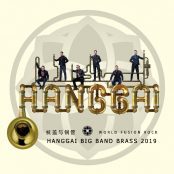[dropcap style=”font-size:100px; color:#992211;”]F[/dropcap]or most of my life I‘ve lived among hulking giants of stone and steel and glass whose wide backs housed – and employed – friends, family, and just about everyone I have met.
Silent companions with the power to crush or cast off, they stand in compliant service largely unmoved by the human drama unfolding within and around them, a backdrop seemingly more fixed and unyielding than any even in nature. Like so many once young and adventurous, I grew comfortable and curious – exploring hidden chambers, skittering across rooftops (sometimes leaping slightly between them), soft-toeing teetering floors, and partying on uneven ledges in search of lost knowledge and occult experience – but a mere piker, even in such exploits. And probably no more than most urban dwellers, I too have looked down from rooftops, or even from less lofty spots alongside, in sad contemplation of a rapid exit from rough circumstance, though obviously never to yield to such temptations. Throughout this urban socialisation, a deep-seated respect for the potential energy of the built environment – my own intrinsic physical frailty – has inspired me to seek a secure peace with my towering neighbours.
The first steel-frame skyscraper, the Home Insurance Building, was birthed in Chicago in 1885, and with time, the vertical exploitation of space so efficiently manifest in the spiky skeletons of tall buildings has followed the calculus of capitalism the world over, irrespective of every way that humans distinguish themselves. The ideology behind the skyscraper combines economic efficiency (the most valuable turf claims multiple parallel rents stacked over each other), with the visual spectacle and power of a tower’s magnificence, the regal fantasy of broad vistas with which to survey one’s surroundings, and trendy technological amenities.
No country in recent time has so colonized the vertical as has China. Thirteen of the world’s twenty-two tallest buildings are rooted in its soil. The most literal embodiment of capital accumulation, tall buildings certify cultural modernity. Still under the thumb of a party calling itself Communist, China has buried ancient cities beneath skyscrapers – its urban landscape completely transfigured – since transitioning to state capitalism in the 1990s. Changsha, a three thousand year old city – once home to Mao Zedong – has sprouted soaring jagged teeth in a few short decades, casting sharp shadows over a museum dedicated to the Communist Chairman. Just a few years ago, “Sky City,” a 220-story, 838-metre-tall gargantuan had been planned that would have even eclipsed the UAE’s Burj Khalifa – the world’s biggest prick since 2010 – but the project has been indefinitely suspended following government concern that it could not be made both cheaply and safely. Interference in the flow of capital and the pursuit of patriotic feats rarely comes at the prompting of safety in China, so its risks to each were likely considerable.
Skyscrapers are a conspicuous frontier within the footprint of a city, and, over time, every frontier is explored. A culture of “rooftopping” has taken seed in Changsha, and other Chinese cities, as young people, usually men, try to exploit the dangers of their trespass – violations of law, safety codes, and obviously and intentionally attempting hazardous climbs without safety gear – for some fame and small fortune. In a perverse rebellion against pragmatism, rooftoppers convert buildings – largely containers for humans –into playgrounds in the sky for gymnastic daredevils. The Chinese did not invent such stunts. There are few things quite as likely to stir the psyche as witnessing people whose mortality is at risk. As mortality is a universal issue ordinarily suppressed socially and psychically, such spectacles tap into phobias deep within us with near universal purchase. The temptation to climb – part of our simian heritage – has engendered, for example, the French “sport” of parkour, in which athletes rigorously train in gymnastics for a martial art with which to subdue the built environment. If ever there were to be a sport tempered for Italian Futurism, the proto-fascist art movement in praise of the technological translation of size into power at the expense of frail humanism, this would be it. I recall reading an interview years ago with the hardcore-punk band Jodie Foster’s Army in which they claimed that skateboarding perverted the way they viewed their city as a series of platforms, ramps, and walls thereby alienating them from prevalent aesthetics and official meanings. Parkour is yet another French affront to the intention of the author (architects), here also flouting property ownership and common sense.
Parkour, rooftopping, stegophily and their idiomatic offshoots are more than reckless opportunism and rebellions against function – they are a form of masochism rooted in Thanatos, our death instinct. In Beyond the Pleasure Principle, Sigmund Freud locates the psychological power of masochism and the desire for ego destruction deep within the libido: we are attracted to (as well as repelled by) that which does us harm or even potential injury. Moths are drawn to flames. Some people intentionally place themselves in harm’s way, by, for example, seeking aggressive romantic partners to “trigger,” while others create “pyramid schemes” that must, eventually, lead to their own ruination. And suicide, like masochism, is moored in a primal pleasure: it seeks to control (through intentionality) that which cannot be avoided (death), and a feeling of control over one’s body is an infantile pleasure present during ego formation. Intentionally placing oneself on a structure in a hazardous way for ego satisfaction and material gain is a game in which one courts, but tries not to consummate, one’s relationship with death – akin to sexual “edging” by which one, as in anal retention, attempts to prolong pleasure in its (temporary) denial. Like “Russian roulette,” the game in which people take turns spinning a gun’s cylinder loaded with a single bullet, everyone who plays will eventually lose. Heroin addiction, at least for those rocknroll adventurers unable to afford pure smack, likewise owes some of its mystique to the very notion that any entanglement can be lethal. In fact, all gambling is like this. The money is not yours until you leave the casino, but then the thrill is gone. The thrill – a pleasure from death – is proportional to the immanence, likelihood, and totality of failure. Nothing is sexier for some than death on a shoestring, at least for a time.
The most notorious “rooftopper” of Changsha was Wu Yongning, a 26-year old stuntman whose video documentation of his own cool, workman-like antics atop seemingly stratospheric antennae won him considerable recognition as well as some purses, as there are prized contests that sometimes fuel the subculture. Watching his videos, we see his easy conquests over the built environment, a human King Kong who conquered technology without effort or fighter planes. Like Timothy Treadwell, the ill-fated protagonist of Werner Herzog’s Grizzly Man documentary, Wu mastered his inner game with a singularity of purpose, economy of motion, and lack of emotion– no pheromones or sweat triggered – so that his mind and body, fully united, could subjugate matter. Unlike Timothy Treadwell, mugging beside a bear he believes to have befriended – fully in denial of danger – Wu is fully focused on the gravity of the situation. I am, at once, astonished by his nonchalance, choreography, sense of balance, and astounding hubris.
It is always difficult to distinguish person from persona and here, unfortunately, I can only regurgitate information from online English-language articles. What emerges about Wu Yongning the person is the ultimate masculine ideal of self-sacrifice for family present and future: he was paying for the health of his mother and the possibility of progeny with the wages of mortal peril. I have also read that he had been a professional stuntman for film and TV. I don’t quite know how to square the notion that he was a romantic outsider, desperately dangling off buildings without training or gear, with an image of a freewheeling moonlighter, presumably trained and paid, who wanted to hit a lottery of ever-larger purses and ever-spreading notoriety. Peeking beyond his hagiography, we ask: Was Wu a salmon desperately swimming upstream to fulfil his purpose in life or a thrill seeker and fame slave who got his come-uppance from gravity – an invisible force that is among the most powerful known? What was the passion of Wu Yongning?
In researching this article, I watched many videos of people in soaring leaps between rooftops and in other flights of fancy. Wu’s videos are not the most spectacular in their gymnastics, but the vistas he captures – the grand city in the sky – are as magnificent as any. Witness his antics: skirting a ledge on a two-wheeled device; balancing on narrow edge of a blackened chimney; perched arrogantly atop antennae hundreds of feet in the atmosphere; leaping across gaps in a rooftop; vaulting over holes in construction site in slow motion; making pull-ups and somersaults on beams with his feet hanging over Changsha; climbing an enormous ladder upside down with his feet in a railing; hanging with a single hand from steel crane; gripping a handle and a phone attached to a selfie stick to film it; etc. Changsha, a “typical city caught in a typical daydream,” unsuspecting that there is a man – perhaps part-superhero and part-schnook – risking all in defiance of gravity perched high above its streets and manicured lawns. His face is often obscured by a handkerchief to protect him from prosecution for trespassing and laws against self-endangerment and suicide. (If we do not have dominion over our exit from life, whose property are we?) Some videos were taken by others and some were taken by himself. Those taken by Wu are, for me, the most affecting, as his isolation underscores his vulnerability amid the steel colossi, how easily and suddenly their inert power – a power of space and matter – could smash him into the planet. As I watch, I am aware of changes to my blood pressure – surely rising – and I have a peculiar tingling in the soles of my feet, as if they are trying to feel the emptiness below Wu and reaching out for terra firma. My palms and feet sweat. I get slight dizziness and a trace of vertigo. Having been atop tall buildings, my body recreates some of the sensations. With something akin to “sympathy pains,” I feel as if my body reach across the ectoplasm toward him, although, of course, he was far away and is now long since gone.
The actual video of Wu’s final stunt sixty-two stories above our planet is a fairly pedestrian maneuver (if you will) by the standards of the craft in terms of acrobatics, presumed difficulty, and production value. In this way, it is by no means his most accomplished work, although it is actually more lethal than the rest. We see him preparing a ledge with a towel so that his grip will be smooth and dry. There is nothing to secure him – no ropes, no nets – and he appears alone. He hangs down the metallic side of a building whose surface was designed with a pattern too narrow for a foot grip. Not liking the way the ledge feels, Wu pulls himself up to examine and prepare it. Then, having adjusted, he tries the trick again. Wu hangs down again and begins to taunt fate with pull-ups, a simple calisthenic. This time, however, his body is just a bit tired from the test and his arms soon fail. He briefly struggles, attempting to find a footgrip for leverage, but his arms, now filling with lactic acid, simply cannot pull him up to safety and he plummets out of the camera shot. As when I watched The Loneliness of the Long Distance Runner, Tony Richardson’s British New Wave classic slab of cinema for the first time, I shout at the screen. Although I know how it will end – how it must end – I desperately want him to avoid his certain fate, but fate being as it is, it cannot be shaken. The line has been crossed, the curse has been cast, the video has been shot and cannot end otherwise. The bounty for the tricks and all it would have given him in life – a cure for his mother and a loving wife – is revealed as a deathtrap.
Once he loses his grip, he floats for a heartbeat, suspended for a frozen moment, then plunges from view. I wonder what he thought on the way down. It is often said that “one’s life flashes before one’s eyes” in such circumstance and I’ve heard some speculate that such a trip would be so fast as to deprive his brain of oxygen and, hence, consciousness. Popular rumors notwithstanding, I find it far more feasible that every sinew and neuron in his body would be fully deployed, in complete awareness, searching for escape. Did Wu regret having taken up this vocation or blame himself for having pushed his luck just once too many times? Did he worry about his mother, who will now live without a son and will likely soon perish despite his efforts? Did Wu pine for his betrothed, his love and inspiration, who is now doomed to roam the earth without him? Or did he die with the same resolute cool in which he practiced his trade? Did he brace himself for impact, grasping for life until the end, or stoically accept a smashing conclusion to his life?
Since Wu’s death on November 8, 2017, the video of his final climb became viral and his star has shined brightly on the internet. Many stories were written about this Icarus who cannot help but fly too high, in over his head over a city, fated for a fall each time we watch the video. Fame, as Andy Warhol and Hannah Arendt noted, is a form of eternity humans have a shot at, however ultimately fleeting and illusory it may actually be. After all, as Percy Shelley illustrated in his poem Ozymandias, everything shall be forgotten in time, however heroic or horrific. Wu traded his physical, literal mortality for an egoistic, symbolic immortality – the sort of narcissistic endeavour most writers, artists, scholars, politicians and inventors engage in – and even now his star has began to fade. As new stories bury those prior, our focus passes, and memory fades. How quickly we forget. Besides, being remembered is not the same as being alive. This essay, for example, probably does nothing at all for Wu himself, as his smashed and cremated remains have since been dispersed, although we do not know whether our actions here have any greater meaning in alternate dimensions and realities.
Wu’s inner world of fantasy, hopes, and love – infinitely small and precious within him – faced off with the mighty skyscraper against the backdrop of outer space. Death seems an illusion from deep within oneself, remote, the stuff of remote legend, when compared with the pressing passions of the inner ocean and the demands of the quotidian. The classic syllogism pronouncing a death sentence for Socrates in logic -“All people are mortal, Socrates is a person, therefore Socrates is mortal” – seems like science-fiction for schoolkids bemused by a distant future, but even the fortunate eventually lose the company of friends and family, and are increasingly bewitched by ailments and chronic conditions over time. Death, the constitutive outside of life, swooped in on Wu with the precision of a thousand angels and driven by a power combing the brute force of brutish mass. The reality principle thus pronounces its primacy over the pleasure principle, and another life – a whole universe of meaning, memory, desire, and fantasy – is annihilated forever. Goodbye to Wu.
New Yorker Jeffrey Wengrofsky has served on the staffs of Aperture magazine, Coilhouse, and Constellations: An International Journal of Critical and Democratic Theory. Also a filmmaker and festival curator, Wengrofsky is now preparing to curate a night of films at the Babylon Kino in Berlin (date TBA). He now has open calls for films for Secrets of the Dead, to be held in NYC in October 2020, and Secret Treaties: Strange Political Bedfellows in 2021. Submit via FilmFreeway. His new film is A BLOOD ARTIST: www.humansyndicate.com/axel-2





















Things your Jewish mother doesn’t let you do.